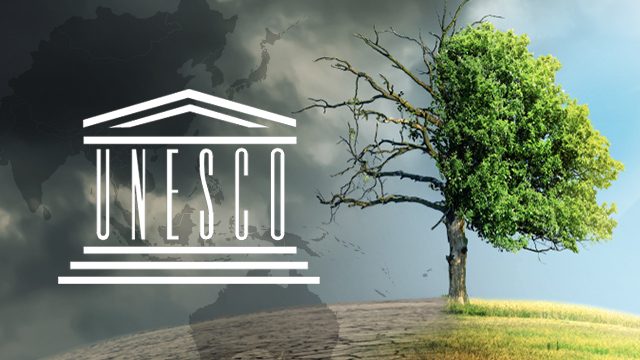SUMMARY
This is AI generated summarization, which may have errors. For context, always refer to the full article.

MANILA, Philippines – Why does it matter that journalists report climate change stories specific to Asia and the Pacific?
The United Nations Educational, Scientific and Cultural Organization (UNESCO) answered that question with its new handbook for journalists entitled Getting the Message Across: Reporting on Climate Change and Sustainable Development in Asia and the Pacific.
UNESCO said the free handbook has been customized for reporting on climate change in the region “to help journalists with limited time or resources improve their coverage.”
This six-part resource material for journalists and editors, as well as teachers and trainers of journalists explores the climate injustices experienced by vulnerable communities, especially women, in least developed countries.
It also provides examples of solutions unique to the region, information on the science of climate change, interview sources, and other essential aspects – environmental, social, economic, political, and technological.
Why the need for media coverage?
According to the handbook, coverage at the local level “can save lives, formulate plans, change policy and empower people to make informed choices.”
“On an international level, it can bring Asia Pacific stories to global audiences and help encourage the rich and powerful countries to act in solidarity with climate vulnerable communities,” it added.
As such, its scope goes beyond carbon dioxide and disasters, and therefore, is not limited to science and environmental reporters.
So it is important that journalists and media owners understand the basics of climate change, from the problem it creates, solutions, and climate policies and plans. These topics are also highlighted in the handbook.
Humanize, humanize, humanize
The handbook also listed the topics climate change specialists in the region wish to have more media coverage. These include gender dimensions and human rights, the legal responsibilities of carbon emitters, climate finance, and success stories, among others.
Beatrice Tulagan, 350.org East Asia field organizer, agrees on almost all topics in the list, especially human stories.
She said “it is easy to get paralyzed and forget that there are real people on the ground experiencing impacts.”
However, she has reservations on climate finance for lack of progress and ambition. What she finds more interesting is fossil fuel finance – banks overseas funding local fossil projects.
350.org is an international climate movement working to end the age of fossil fuels and build a world of community-led renewable energy for all.
Imelda Abano, Pacific Region content coordinator for Internews’ Earth Journalism Network, also thinks we need more stories highlighting the human face of climate change.
She said in the Philippines, these are the people in coastal communities or those affected by rising sea levels, farmers, and marginalized groups.
Reporting tips
The handbook gave journalists reporting tips: localize the global, humanize stories, collaborate, and make it visual.
Misako Ito, UNESCO’s adviser in communication and information in the region, said “you just need to look at your environment and community with a climate lens.”
That’s why for Abano, journalists from provinces need more support in terms of capacity building and resources.
The handbook said Nepalese radio programs Jeevan Rakshya or Life Saving and Sajhanepal are examples of effective collaboration. Both have been airing every Tuesday and Saturday, respectively, since 2009 through the Community Information Network.
These air simultaneously in 280 community radios, with local reporters contributing reports from rural communities affected by climate change. The result: people learn from other communities how to deal with similar kinds of problems.
Meanwhile, Eric Pooley, former deputy editor of Bloomberg Business Week and author of the book The Climate War, said newsrooms should have a mix of environmental science reporters, political reporters, and business and energy reporters reporting together instead of in isolation.
As cited in the handbook, media outlets can create this ideal climate policy teams to be able to effectively report on those deeply connected angles.
In terms of visual reporting, Abano said multimedia reporting, use of drones, 360 cameras, graphics, interactive data, mapping, and geojournalism are necessary.
Caveats, suggestions
The handbook also talks about caveats, one of which is false balance, or when a reporter gives space to skeptics even if climate change is a proven fact.
It also warns of attributing every single event to climate change without scientific basis.
“Journalists should always explain individual events on what the scientists say about the changing likelihood of such events,” the handbook said.
UNESCO welcomes feedbacks from journalists, such as including the inherent danger of reporting environmental stories.
While UNESCO has a whole program promoting the safety of journalists through the implementation of the UN Plan of Action for the Safety of Journalists, this topic is not included in the handbook.
Here are other relevant handbooks for journalists reporting on climate change:
- KLIMA 101: A Climate Change Guidebook for Philippine Journalists by the Philippine Network of Environmental Journalists zooms in on reporting on agriculture and food security in the Philippines.
- Citizens Handbook on Environmental Justice by the Philippine Judicial Academy discusses the step-by-step process when bringing an environmental case before the proper forum or the court.
- The People’s Guide is a handbook for those considering whether to bring a human rights-based case against their governments in their fight for justice. The handbook was developed by Greenpeace Philippines and Climate Justice and Liability Campaign.
– Rappler.com
Add a comment
How does this make you feel?
There are no comments yet. Add your comment to start the conversation.